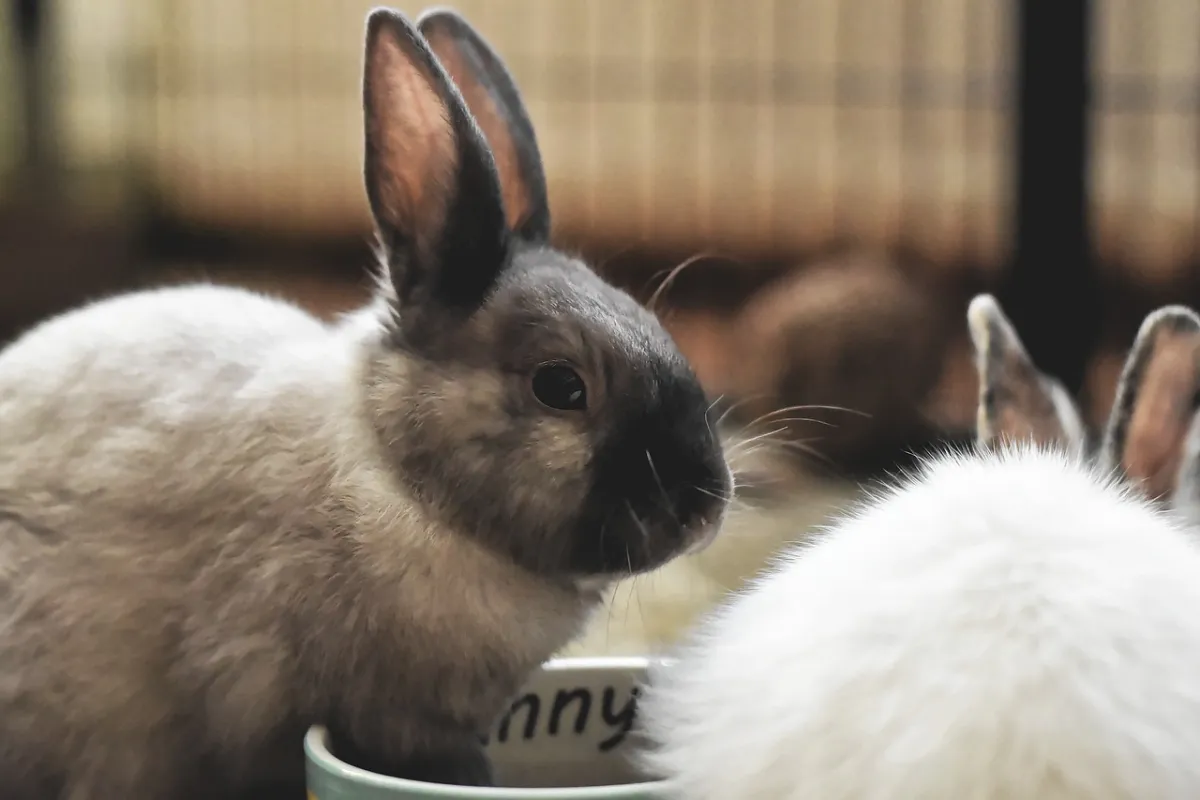Do you ever wonder if rabbits have a hidden talent for climbing? Well, wonder no more! In this article, we will explore the fascinating world of rabbit behavior and discover whether these furry creatures can defy gravity and scale trees.
We will delve into the factors that drive their climbing instincts and provide you with tips to keep your domesticated rabbits safe and secure.
So, get ready to uncover the truth about rabbits and their surprising abilities!
In This Article
- 1 Key Takeaways
- 2 The Natural Habitat of Rabbits
- 3 Understanding Rabbit Behavior
- 4 Unusual Sightings: Rabbits in Trees
- 5 Exploring the Fence Climbing Phenomenon
- 6 Factors That Drive Rabbit Climbing Behavior
- 7 Can Domesticated Rabbits Climb
- 8 Tips for Keeping Rabbits Safe and Secure
- 9 Frequently Asked Questions
Key Takeaways
- Rabbit burrows serve multiple purposes in their natural habitat, providing shelter from extreme weather conditions and protecting rabbits from predators.
- Rabbits can climb and jump, but not all rabbit species exhibit tree climbing behavior. They may climb trees to escape predators or seek shelter, access food sources, or create nests.
- Rabbits have strong hind legs and nimble paws that enable them to grip onto surfaces and climb over fences. Their flexible spines allow them to fit through narrow gaps.
- Climbing behavior can pose potential dangers and risks for rabbits, including predators, entanglement, stress, anxiety, and the risk of falling and sustaining injuries. It is important to provide a safe environment for rabbits and prevent accidents to ensure their well-being.
The Natural Habitat of Rabbits
Do rabbits burrow in the ground to create their natural habitat? Yes, they do! Rabbit burrows are an essential part of their natural habitat. These burrows serve multiple purposes, including providing shelter from extreme weather conditions and protecting them from predators.
Rabbits are known for their ability to dig complex burrow systems that can extend several feet underground. These burrows consist of interconnected tunnels and chambers that provide the rabbits with a safe space to live, sleep, and raise their young.
The burrows also help regulate the temperature, keeping the rabbits cool in hot weather and warm during the winter months. These burrows are crucial for their survival, as they help them escape from predators such as foxes, coyotes, and birds of prey who might pose a threat to their safety.
Understanding Rabbit Behavior
You should observe a variety of rabbit behaviors, such as hopping, thumping, and grooming, to better understand their communication and social interactions. Rabbits are highly social animals, and they use various forms of body language to communicate with each other and with humans.
Here are some common rabbit body language signals you should look out for:
- Hopping: Rabbits hop when they’re happy and playful. It’s a sign of their contentment and enjoyment.
- Thumping: When a rabbit thumps its hind legs, it’s a warning signal to alert others of potential danger. This behavior is often seen in the wild but can also be observed in domesticated rabbits.
- Grooming: Rabbits groom themselves and each other as a way to bond and show affection. It’s a sign of trust and comfort in their surroundings.
Unusual Sightings: Rabbits in Trees
Have you ever seen rabbits in trees? It is quite unusual, but it can happen due to their ability to climb and jump. Rabbits are known for their agility and quick movements, which allow them to navigate their surroundings with ease. While they are primarily ground-dwelling animals, they have been observed climbing trees in certain situations.
This behavior is most commonly seen in rabbits when they are trying to escape from predators or when they are seeking shelter. Rabbits may also climb trees to access food sources or to create nests for their offspring.
It is important to note that not all rabbit species exhibit tree climbing behavior, but those that do are fascinating to observe. The table below highlights some key information about rabbits in trees.
| Rabbit Tree Nests | Tree Climbing Behavior |
|---|---|
| Provide shelter and protection for rabbits | Allows rabbits to escape from predators |
| Made from twigs, leaves, and fur | Helps rabbits access food sources |
| Hidden among tree branches | Provides a safe place for rabbits to rest and raise their young |
Understanding the behavior of rabbits in trees can provide valuable insight into their survival strategies and habitat preferences. It is a reminder of the incredible adaptability and resourcefulness of these creatures, as they utilize their natural abilities to thrive in different environments. So, next time you spot a rabbit in a tree, take a moment to appreciate their remarkable climbing skills and the unique nests they create.
Exploring the Fence Climbing Phenomenon
Can you believe how rabbits can effortlessly climb over fences and escape from predators? It’s truly remarkable how these small creatures have evolved to master the art of climbing.
Here are three fascinating rabbit climbing techniques that showcase their adaptability:
- Nimble Paws: Rabbits have strong hind legs and nimble paws that enable them to grip onto surfaces like fences. Their paws have sharp claws that provide them with excellent traction, allowing them to navigate vertical obstacles with ease.
- Flexible Spines: Rabbits possess flexible spines that allow them to contort their bodies to fit through narrow gaps in fences. This incredible flexibility gives them an advantage when it comes to escaping predators or accessing new food sources.
- Strategic Leaping: Rabbits are skilled leapers and can use their powerful hind legs to propel themselves to greater heights. By combining their leaping ability with their climbing skills, rabbits can quickly ascend fences, evading potential threats.
The evolution of rabbit climbing is a testament to their survival instincts and resourcefulness. As they continue to adapt to their environment, rabbits will undoubtedly develop even more impressive climbing techniques to ensure their safety and survival.
Factors That Drive Rabbit Climbing Behavior
Don’t overlook the importance of environmental factors in influencing rabbit climbing behavior.
Rabbits, known for their agility and ability to navigate various terrains, have developed climbing adaptations to aid them in their natural habitats. These adaptations include strong hind legs, sharp claws, and a flexible spine, allowing them to scale obstacles like trees, fences, and rocks.
However, while this behavior may seem harmless, there are potential dangers and risks associated with rabbit climbing. For instance, rabbits may encounter predators or become entangled in fences or branches, leading to injuries or even death. Additionally, climbing can cause stress and anxiety for rabbits, especially if they aren’t accustomed to such activities.
Therefore, it’s crucial to consider the environment and potential risks before allowing rabbits to engage in climbing behavior.
Can Domesticated Rabbits Climb
You should consider the potential risks and limitations of domesticated rabbits climbing. While rabbits are agile and can jump high, their climbing abilities are limited due to their body structure and natural instincts. Here are some factors to consider:
- Anatomy: Rabbits have strong hind legs for jumping, but their front legs aren’t designed for climbing. Their paws lack the gripping ability of animals like cats or squirrels, making it difficult for them to climb vertical surfaces.
- Safety concerns: Rabbits are delicate animals and can easily injure themselves while attempting to climb. They may fall and sustain injuries such as broken bones or sprains. It’s crucial to provide a safe environment for them to prevent accidents.
- Rabbit agility training: Although rabbits can’t climb like other animals, they can still participate in rabbit agility training. This training focuses on jumping, hopping through obstacles, and navigating tunnels, which allows rabbits to showcase their natural abilities without the risk of climbing.
While rabbit climbing competitions may not be feasible, rabbit agility training offers a safer alternative that promotes their well-being and showcases their unique skills.
Tips for Keeping Rabbits Safe and Secure
To ensure the safety and security of your rabbits, it’s important to provide them with appropriate shelter and a secure enclosure. Rabbit proofing your home is the first step in creating a safe environment for your furry friends. Rabbits are curious creatures and love to explore, so it’s crucial to remove any potential hazards such as electrical wires, toxic plants, and small objects they could swallow.
When it comes to outdoor enclosures for rabbits, a sturdy and predator-proof structure is essential. Make sure to choose a spacious enclosure that allows your rabbits to hop, run, and dig. It should be made of strong materials and have a secure lock to prevent any escapes or intrusions.
Providing your rabbits with a safe and secure living environment will ensure their well-being and happiness.
Frequently Asked Questions
How High Can Rabbits Climb?
Rabbits and trees: Can rabbits reach great heights? Yes, they can! The art of rabbit climbing involves techniques and adaptations that allow them to navigate branches and climb to impressive heights.
Do All Rabbit Species Have the Ability to Climb?
Rabbit climbing behavior varies among species. Some rabbits, like the rock ptarmigan, have specialized adaptations for climbing. However, not all rabbit species possess this ability. It ultimately depends on their environment and evolutionary adaptations.
Are There Any Known Dangers or Risks Associated With Rabbits Climbing?
When it comes to the risks of rabbits climbing, there are potential injuries to consider. Rabbits may fall and hurt themselves, leading to broken bones or internal damage. So, it’s best to provide safe and secure environments for them.
How Can I Prevent Rabbits From Climbing on My Property?
To prevent rabbits from climbing on your property, consider installing rabbit-proof fencing options like wire mesh or chicken wire. Additionally, natural deterrents such as planting strong-smelling herbs or using predator urine can help keep rabbits away.
Can Rabbits Climb on Different Types of Surfaces, Such as Walls or Rocks?
Rabbits are surprisingly skilled climbers. They can scale walls and rocks with ease, thanks to their strong hind legs and sharp claws. Their unique climbing abilities make them quite adaptable in various environments.





